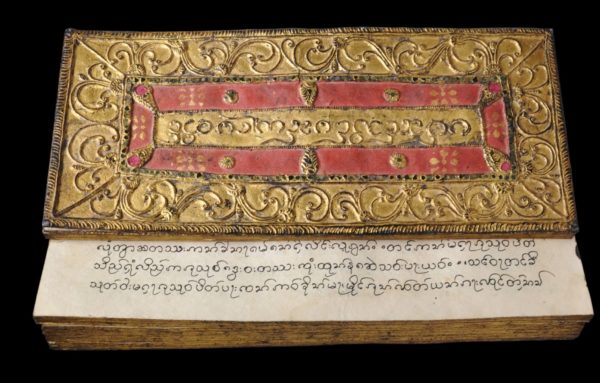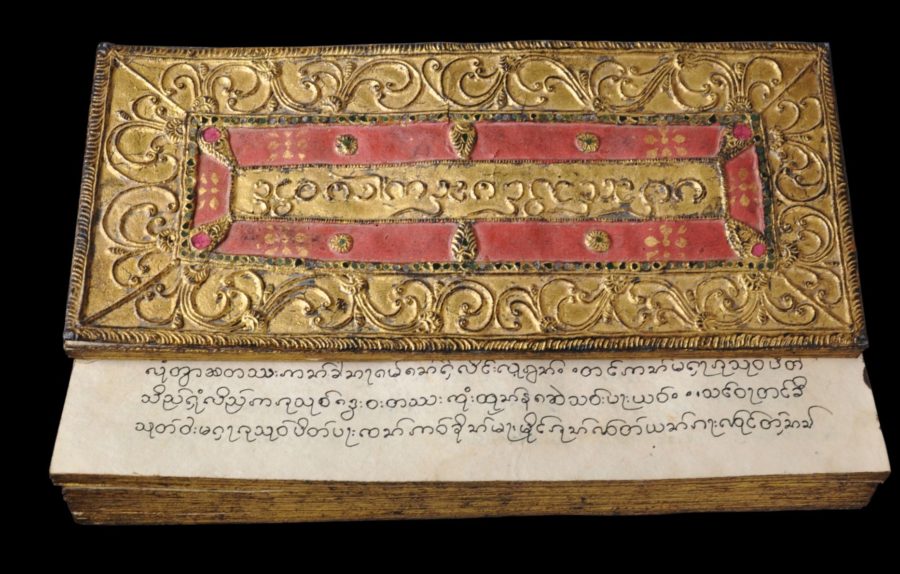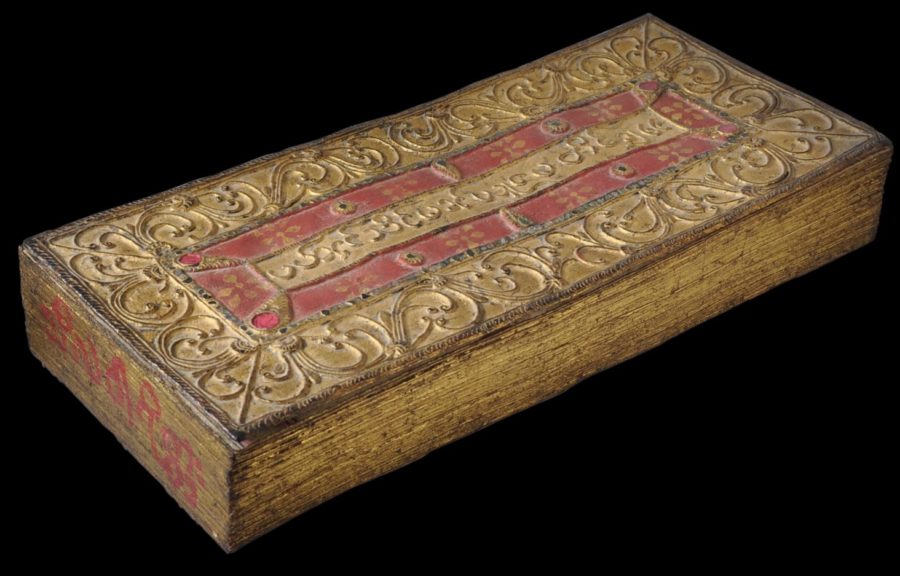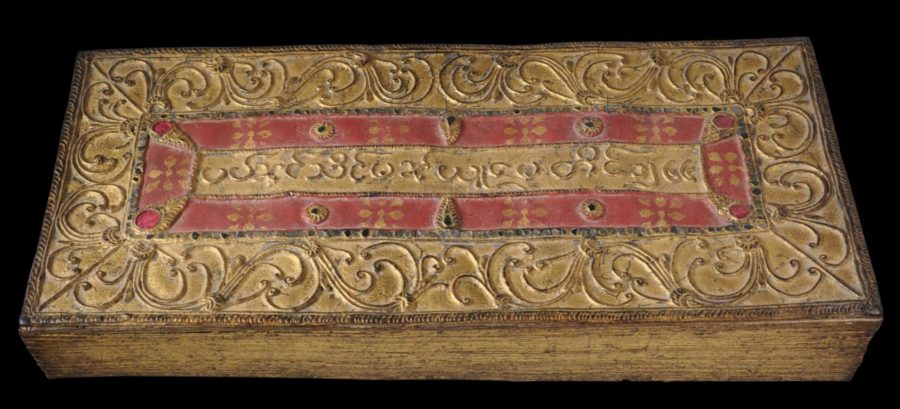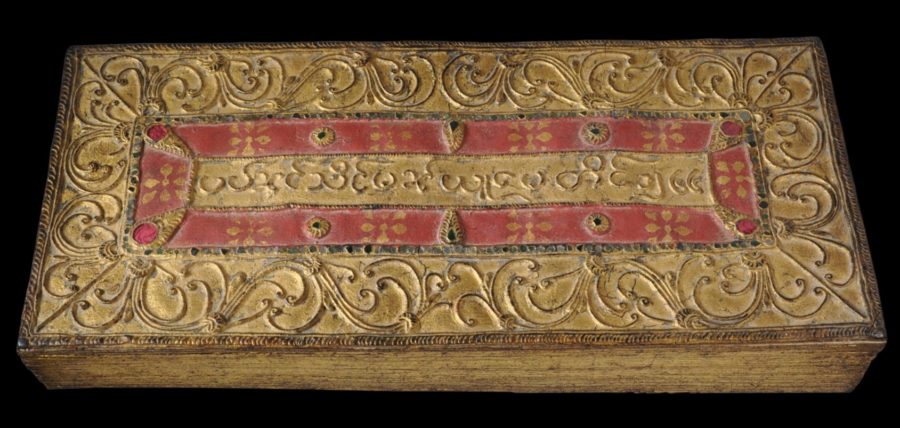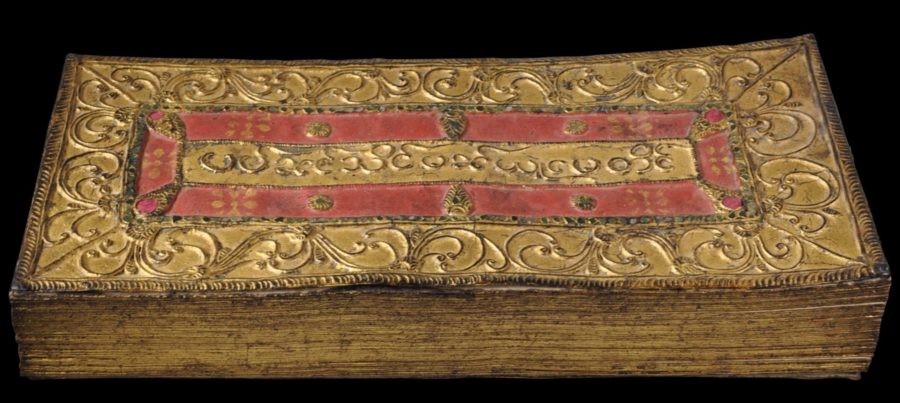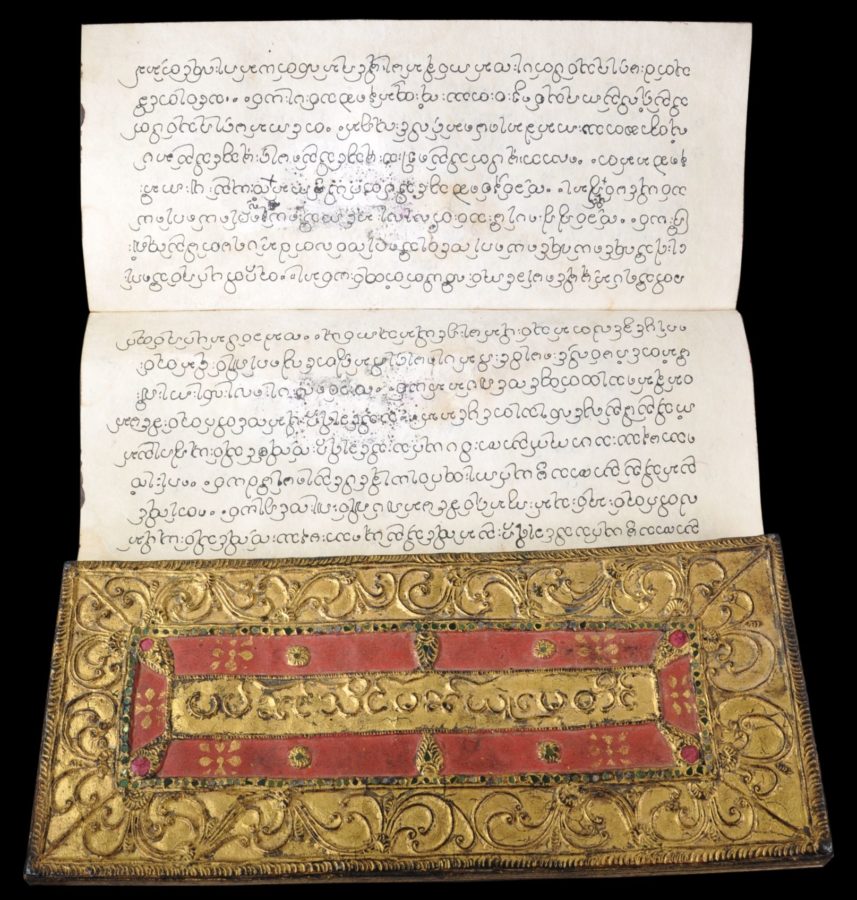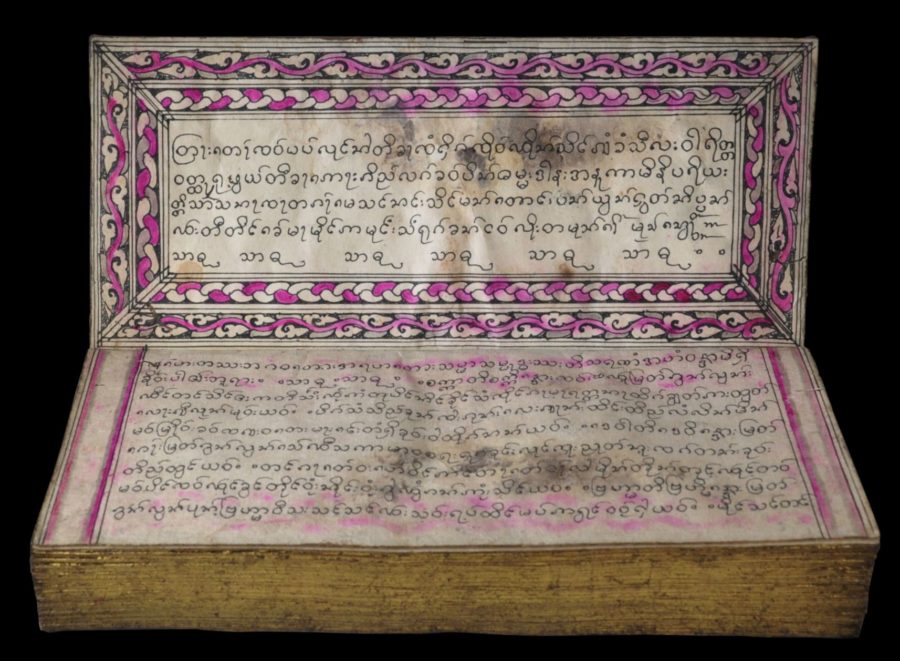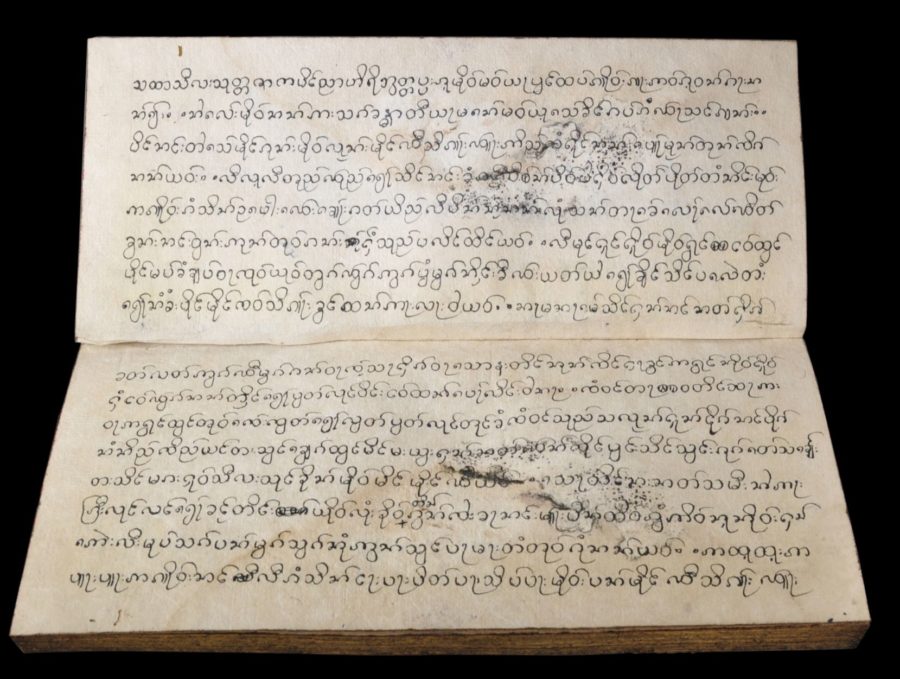This folding book or manuscript (pap top) comprises one long, folded sheet of paper attached at each end to gilded, lacquered covers that are decorated with molded relief work, a technique known as thayo, whereby lacquer is molded and extruded into designs over the surface, as well as being inlaid with small pieces of glass backed with green and silver foil, a process known as hman-zi swei-cha. The covers also have borders of red that surround a central register of text. This is the case for both covers at each end.
All page sides are gilded as well.
Each page has eight lines of script in black ink.
The frontpiece contains five lines of script within scrolling bordered decorated with black ink, and grey and pink colouring.
The paper used is likely to be locally made from the bark of mulberry trees.
The manuscript is likely to be a religious text and is in the Shan language, which is related to Burmese. It is likely that the book was commissioned by a Shan family to mark an auspicious occasion, the commissioning of such books being an act of merit. Such books would be kept either in the home in the area or worship, or be presented to a monastery (Igunma & May, 2019, p. 112).
The manuscript is largely free of tears and losses but there is smudging to the text throughout due to water or humidity. There are also worm holes here and there. The entirety is intact and the covers are in fine condition with no significant losses.
References
Igunma, J., & S.S. May (eds.), Buddhism: Origins, Traditions and Contemporary Life, British Library, 2019.
May, S.S. & J. Igunma, Buddhism Illuminated: Manuscript Art from Southeast Asia, University of Washington Press, 2018.


